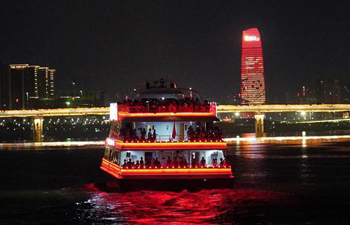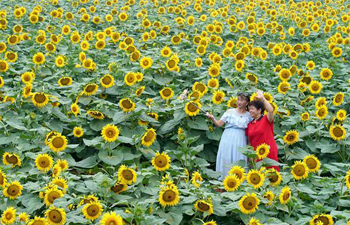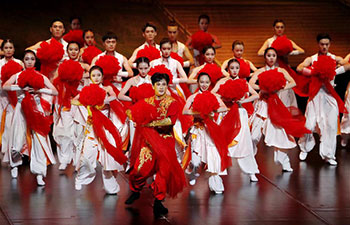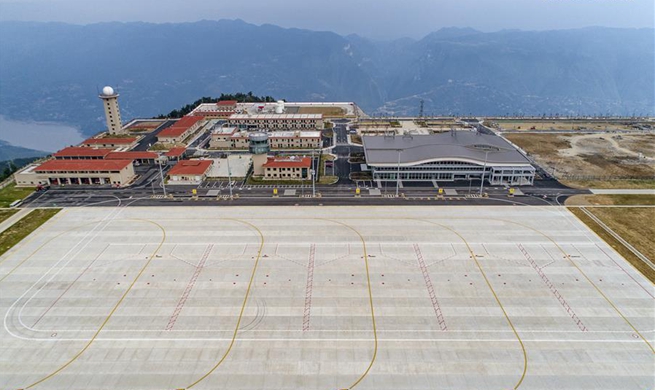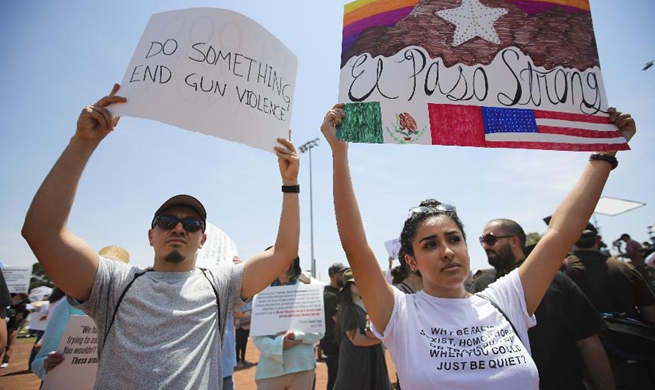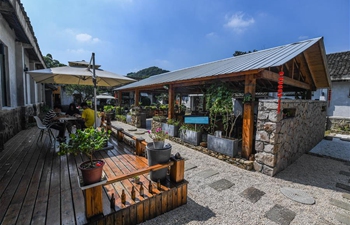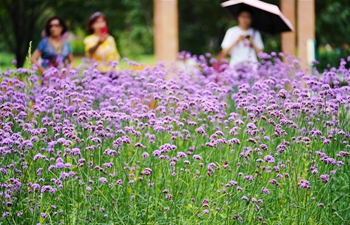KIRINYAGA, Kenya, Aug. 8 (Xinhua) -- The British colonialists in Kenya had become increasingly irritated by Muthirigu, a traditional dance popular with the Kikuyu community of central Kenya.
It was banned in the early 1930s but locals who fought overseas during the Second World War were given a green light by colonial masters to reintroduce the dance.
"When the colonial administration banned Muthirigu, a vigorous local social protest cultural dance style, the community was left with no option than to seek a substitute style," said Lillian Magu, a 98-year-old granny.
Magu said that the dance style was one of the most popular genres with which the Kikuyu community used to propagate anti-colonial messages.
And when it was banned, those who were leading the entertainment arena sought a second choice that would be as alluring to the colonial master as possible in order to avoid another ban.
They came up with the Mwomboko dance which the colonialists tolerated as it resembled their fox trot, a style which like Mwomboko involves couples swaying to the beat, making mottled steps in harmonized choreography and with unhurried circular motion.
Mwomboko, in which the dancers also move in a file, count two steps, bend down and then move majestically back and forth in a comical harmony, had a sensational effect for anyone watching older folk waltzing while its contact effect eased courtship for young people who danced to it at night.
To date, the dance enjoys a cross-cultural, gender and multi-ethnic appeal, making it a popular treat since independence.
A group of elderly - 12 men and women - who hail from Kirinyaga County in central Kenya are the main faces of the dance which both entertains and informs the citizens on the rich culture of the Kikuyu community.
"We compose and perform songs with important messages that affect our everyday livelihood, then perform them in a Mwomboko style," said Daniel Mukuura, a composer.
The genre educate the society about the dangers of vices such as Female Genital Mutilation, tribalism and HIV/AIDS while stressing the positive aspects of the Kikuyu culture.
"The dance style employs instruments such as the ancient accordion instrument played in accompaniment to percussive, clang sounds of the metal rings, which together allow the artistes to perpetuate catchy tunes of the rare genre," said Magu.
She said that during the first and second World Wars, Nairobi's Burma market was the designated area where many Carrier Corps, especially from western Kenya met and honed their skills in music.
Magu said that locals who were drafted in the British army to fight in both first and second world wars returned home with musical instruments like guitars and accordions.
According to Magu, the modern music instruments enriched local dancing styles.
She noted that Mwomboko in particular is a now part of Kenya's heritage and is showcased during national holidays.

